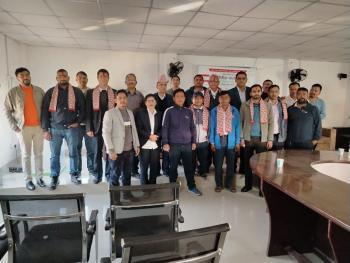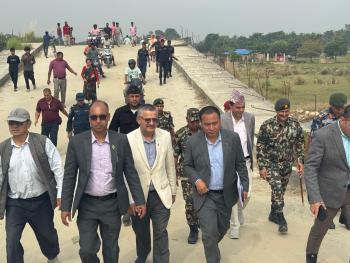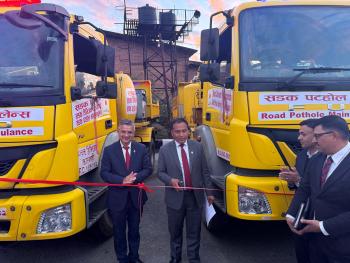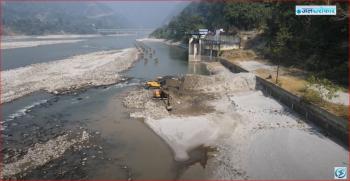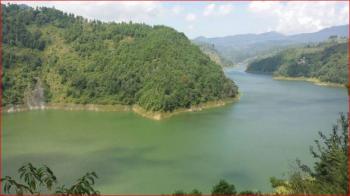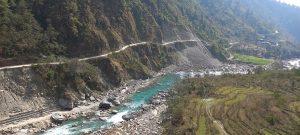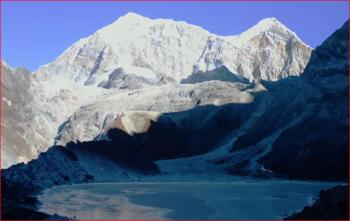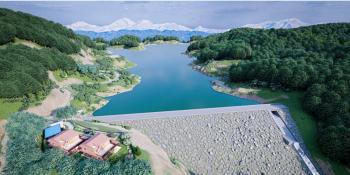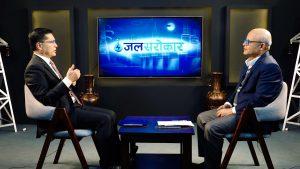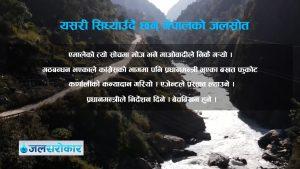Reinvigorating the Bagmati River-What is Bagmati
 Govinda Sharma Pokharel
Govinda Sharma Pokharel
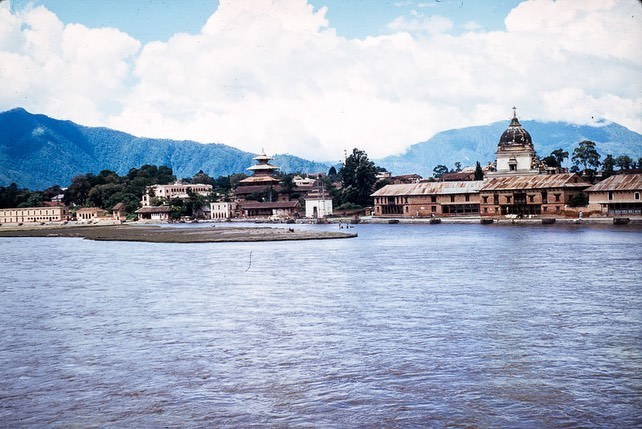
All the inhabitants of Kathmandu valley believe that the KMC slogan “Clean and Green Bagmati” is really a serious message and not limited to the slogan itself. But Bagmati River flows whenever and wherever it can. One should actually understand the significance of the slogan for transforming it into reality. For that, one should know what Bagmati is physically, spiritually, culturally, socially apart from what we see and truly understand its linkages with the communities and its glories of the past.
What is Bagmati then? Bagmati is a river like so many other rivers. But, on top of that Bagmati is a civilizational river, where the present civilization flourished starting at least a few thousand years ago probably starting from a phase when people were still hunter gatherers or maybe little advanced.
Bagmati River, the trunk river starts from BaghDwar near Sundarijal and flows downstream meeting many tributaries from around Kathmandu valley. On the way it crosses settlements, farmlands as well as numerous sites of cultural significance (of course, constructed by different influential personalities at different times for different purposes) until its exit from the gorge at Chobhar and Katuwaldaha. It continues its journey through the mountain valleys and the Tarai and finally flows into India where it meets the Ganges feeding the Saptakosi River at Badlaghat in Bihar. It is predominantly a rain-fed river which is spring-fed during the entire non-monsoon season.
Bagmati River as the backbone of the drainage system of Kathmandu valley should have come to existence with the formation of the valley itself over 3 million years ago. The mountains in the southern margin of the valley used to have gullies at lower elevations than the present Kathmandu valley floor; this means that the drainage system was functional though the presence of smaller pools, lakes, ponds or puddles of water in Kathmandu valley during the monsoon cannot be ruled out. It is also not yet clear if the whole of the Bagmati River existed as one river since its formation. However, the situation changed about 2.8 million years ago when the existing drainage system towards the southern margin of the valley was blocked most likely due to slow rise of the Chobhar Gorge and other likely exits giving rise first to shallow lakes which became deeper and deeper while moving towards the north due to greater rate of rise of the southern mountains together with the Chobhar Gorge starting from about one million years ago[1]. The lake dried out about 10,000-11,000 years ago towards the end of the last ice age. The process of drying must have been gradual that must have started with drying out of the higher areas followed by lower and lower areas until its final drying out. The cause of drainage of water from the Kathmandu valley should have been a combination of two main factors: sedimentation of the valley floor and erosion of the river exit of Chobhar: both being gradual and predominantly seasonal.
It is important to note that Kathmandu valley had a lake on its southern side, which moved towards the north due to upliftment of mountains as well as the valley floor in the southern margins. Most of the areas within the Kathmandu basin including the northern areas fed the lake which extended to as far north as to a few km north of Chapali (?). Similarly, apart from the main lake, the valley could have contained other smaller lakes and ponds with seasonal existence; some of the lakes could have been existing throughout the year.
Bagmati River together with its tributaries used to be the sign of prosperity for the people living in Kathmandu valley where human activities seem to have started as early as 5-10,000 years ago[2] (ref. Neolithic tools obtained from the banks of Bishnumati River north of Budhanilkantha, a few km north of NarayanGopal Chowk) who should have transformed their nomadic livelihoods into civilizations of the present times. This means that over 5 to 10,000 years ago the homo sapiens must have arrived to the bank of Bishnumati River while hunting or following a hunt or following a natural food chain or whatever but must have settled there itself because of the following reasons: a. easiness of hunting as animals who come to the river for drinking could be killed rather easily, b. later on when they learned to rear cattle or other animals for meat and milk, it should have been the ideal place with lush green forests adjacent to a water body, c. further down the time line, agriculture in the lacustrine soil of Kathmandu valley with good crops could have been the attraction. In addition, the Kathmandu valley must have a wide variety of fruits, nuts and yams growing naturally to feed whoever came across it. Similarly, the abundantly available fishes in the rivers could always be caught for additional supply of food.
The early settlers of the valley could have come to the valley earlier than the time when the lake finally dried out because the northern part of the valley as well as the slopes surrounding the valley were always above the water level. The location where the tools were discovered in Bishnumati and in Lubhu were never under water and therefore the early settlers could always come there and settle. More archeological research is required to conclude about the early settlers of Kathmandu including the settlers of Sankhu (Sankharapur). The early settlers could have come to the valley from different sides and there is a strong possibility that multiple number of settlers were inhabiting the different locations of the valley at the same time who could have had their separate and independent empires until they, one after the other, merged into a single large community due to one or the other reason such as war, friendship or common enemy. This is the origin of the Newars (meaning inhabitants of Ne) who must have had a flourishing culture by the side of Bagmati in Kathmandu valley.
Important cultural heritage along the Bagmati and its tributaries
Bagmaati (trunk River): Baghdwar, Uttar Bahini Ganga (Gaya of Bagmati), Gokarneshwar Mahadev, Guheshwari, Pashupati Nath, Kalmochan, Pachali Bhairab, Rishi ko Sthan, Chobhar Ganesh
Bishnumati River: Chapali bank of Bishnumati River from where the Neolithic tools ware recovered, Balaju, Shova Bhagwabati, Indrayani, Teku Dobhan where it meets Bagmati River.
Similarly, Dhobi Khola, Manahara river including Hanumante Khola, Ghatte Khola, Sali Nadi, Godavari river,Nakhu Khola, Tukucha (Ichhumati), Balkhu Khola, Kodku Khola, etc and their respective tributaries have a large number of invaluable heritage many of which are being frequently visited by the devotees but many lack their proper recognition. Which one of these cultural heritages of Bagmati is the oldest one? The older ones should be located around the periphery of the valley or at higher elevations like the temple of Bajrayogini near Sankhu or the temple of Budhanilakantha.
Origin of the Bagmati river
The origin of the Bagmati river[3], [4] with its tributaries should date back to the period when a cup-like valley was slowly and gradually formed in the geological past over 3 million years ago when all these rivers including the Bagmati and its tributaries used to flow either independently or met at different places along the course of Bagmati river or its tributaries somewhere towards the middle part of the valley which could have consisted of a number of monsoon puddles or ponds or lakes some of which could have been survived throughout the year. The situation must have gradually changed in favor of the water bodies which could have merged with one another to form one large lake with maybe some smaller lakes due to breach of the river exits including the exit at Chobhar sometimes 2.8 million years ago. The merging of the smaller lakes could have led to the formation of a shallow lake the depth of which should have increased due to tectonic movements[5],[6]. Similarly, the sediments from around the valley must have deposited in the water bodies threatening the existence of the smaller and shallower lakes. The rate of increase in the depth of the lake intensified about 1 million years ago due to uplift of the mountains in the southern margin of the valley which should have uplifted the opening at Chobhar at the same time causing the lake to be deeper and also causing the lake to shift northwards. During this period, all the then existing rivers should have been feeding the lake which could have overflowed in the monsoon. In the post monsoon months, the water from the lake should have been subjected to evapotranspiration losses. The lake, at the same time, should have been silted due to sediments from around the valley. Therefore, a complex process of deepening of the lake due to tectonic action as well as filling of the lake by the sediments continued until about 11,000 years when the lake completely dried out except for a few smaller lakes, ponds or puddles along the rivers. The process of drying out of the lake should also have been gradual which must have started with disintegration of the large lake into smaller ones merging every once in a while in the monsoon.
This phenomenon may have several stages starting with the drainage of the occasional spillover of water in some of the monsoons to more permanent type of outflow due mainly to filling of the lake by sediments from around the valley, erosion of the gorge itself as well as due to tectonic reasons leading to the present drainage condition. During the process, there had been shifting of the lake itself from south to the north which should have been gradual but the reasons for such shifts should be a combination of tectonic and sedimentation factors. However, I am not comfortable guessing the age of the first spillover or the age of the continuous spillover from Chobhar Gorge though it is obvious that an occasional spillover in the monsoon must have continued ever since the formation of the lake(s).
Homo Sapiens in Kathmandu Valley
The argument presented hereinabove which supports the existence of the lake as well as dry lands in the northern as well as eastern periphery of the valley with well-defined network of the rivers as well as the hill slopes must have been a suitable place for human inhabitation ever since its formation. However, the archeological findings in the valley are limited to the Neolithic age only. This corresponds to about 6,000 - 5,000 years before present time (bp), which is approximately the start of the Kali Sambat (Bikram Sambat + 3,000 years)[7]. The story that Shankharapur was established about 3,200 years ago by merging seven hamlets which together formed the shape of a Sankha[8] also indicates that there were villages or hamlets in Kathmandu valley about 3,200 years ago which must have existed since some time (Prof. Dr. Govinda Bol Shrestha). This further indicates the presence of human race in Kathmandu valley to periods much earlier than Neolithic but there are no evidences to support it. Therefore, there is a strong need to engage into archeological or anthropological research of Kathmandu valley which may lead to better understanding of the origins of the Newars and other inhabitants on the periphery, the Kanth. The migratory routes to the valley from around the settlements outside of the valley could also lead to the origin of Newars and their cultural riches.
Campaigns for cleaning Bagmati
Campaigns for cleaning the Bagmati River are going on since about the 1970s; the pioneer personality was engineer HutaRam Baidhya. Since then, the campaign has gained momentum in terms of the number of campaigns and the personalities leading them with almost 100 NGOs, the Kathmandu Metropolitan city, many political figures as well as bureaucrats and ex-bureaucrats to name a few. In the present days, it has become a fashion to oppose polluting Bagmati at the same time continuing its pollution either directly or indirectly. Most of the local governments of Kathmandu valley including the Kathmandu metropolitan city council continue financing such polluting projects despite the good banners they demonstrate in public. Similarly groups of campaigners led by politicians and bureaucrats are engaged in the campaign as if to make the inhabitants of the valley aware of the situation and the importance of cleaning it. The ineffectiveness of such campaigns is demonstrated by the fact that the pollution of Bagmati River is not decreasing despite such ‘efforts’ that generally includes wide media coverage. Such public show with or without any core objective and without their evaluation and feedback have been proved to be futile. Therefore, the campaign should change its basic agenda of awareness to an effective agenda focusing on the core objective by including the core issues such as stopping any further pollution, stopping any further encroachment, stopping any further riverbed mining together with appropriate attention to the linkage of the river with local culture, tradition, inherent spirituality and religion at the same time working on the legitimacy of polluting the water bodies within the existing legal framework or social norm or formulating fresh framework for a cleaner Bagmati leading to cleaner Kathmandu. For an effective campaign, the focus should be on the core issue with appropriate monitoring and evaluation of the effectiveness of the campaign with data that should be compared with the baseline data on river pollution and river encroachment. In the same way, cultural as well as spiritual connectivity of local communities with the Bagmati should be studied in depth to understand the significance of the river as a civilizational river.
The spiritual connectivity of local communities of Kathmandu with Bagmati is expressed in terms of very important rituals and customs from the birth of a child to the death. People of both Hindu and Buddhist religions worship the river in their own ways and Bagmati has a high religious significance for both. The second spiritual significance of Bagmati River lies in the fact that an innumerable number of religious and cultural heritage are located along the banks of Bagmati as well as its tributaries. The most significant among them are Pashupati, Guheshwari, Kalmochan, Gokarna, Chobhar Ganesh, among the ones located along the trunk Bagmati river. Other important cultural and religious heritage along the main trunk Bagmati as well as other tributaries number over 150. Many of such heritages are at the brink of destruction due mainly to negligence often linked with the polluted river. Efforts by local pujari and guthi of one or the other temple or institution have delivered practically nothing despite some untiring efforts of some of them. Therefore, an expression of good linkages between the river and the communities involving a larger number of communities, mostly Newar communities and the communities of the Kanth (काँठ) will certainly help in improving the quality of the cultural heritages along the rivers as well as attaining the objective of meaningfully and effectively cleaning the Bagmati River.
Therefore, a more serious, coordinated and result oriented intervention of, preferably, all organisations involved at present in this effort is considered to be the only effective roadmap in obtaining the desired objective of effectively cleaning the Bagmati with tangible results. However, we have to recognize that the issue of the Bagmati River is multidimensional. And so are the organizational objectives of the institutions involved in this cause. Hence, connectivity of the like-minded and dedicated activist organisations, guthis, local clubs, peoples’ representatives, donor communities, individuals as well as others can be the starting point wherein the individual activist stakeholders can share their respective objective visions of attaining the objective and how their inputs are invested in a more coordinated way and how the outcomes are measured, reported; the feedback from such campaigns will help design better effective campaigns for a total and permanent reinvigoration of the river. But the first step in meaningfully cleaning the Bagmati and its tributaries lies at the full stoppage to the construction directly polluting the rivers using government as well as public funds.
[1] Dinesh Shrestha/Milap Dixit, 2010: The lake that was once Kathmandu, Nepali Times weekly magazine, Issue # 514, 12.08.2010.
[2] Banerjee N. R. 1969, Discovery of the Remains of Prehistoric Man in Nepal, Ancient Nepal, Journal of Department of Archeology, GON, No. 6, pp.51-55.
[3] Harutaka Sakai (2001). The Kathmandu Basin: an archive of Himalayan uplift and past monsoon climate. Journal of Nepal Geological Society, 2001, vol. 25 (special issue), pp 1-8
[4] Harutaka Sakai, Rie Fuju, Yoshihiro Kuwahara, Bishal Nath Upreti, Suresh Das Shrestha (2001). Core drilling of the basin-fill sediments in the Kathmandu valley for paleoclimatic study: preliminary results. Journal of Nepal Geological Society, 2001, vol. 25 (special issue), pp 9-18
[5] Harutaka Sakai (2001). Stratigraphic division and sedimentary facies of the Kathmandu Basin Group, central Nepal. Journal of Nepal Geological Society, 2001, vol. 25 (special issue), pp 19-32
[6] Fuminori Sawamura (2001). Sedimentary facies changes recorded in the pre-Pleistocene Kathmandu Basin group in the southern part of the Kathmandu valley, Nepal. Journal of Nepal Geological Society, 2001, vol. 25 (special issue), pp 33-42
[7] Bikram Sambat - Nepali Calendar - New Year's Resolution - Nepali Patro
लेखकको बारेमा

प्रतिक्रिया
भर्खरै
-
अब काठमाडौंका सडकका खाल्डाखुल्डी तत्काल मर्मत गर्न 'सडक एम्बुलेन्स' सञ्चालनमा
-
एनएमबि बैंकलाई भिसा इन्टरनेशनलबाट ‘डिजिटल पेमेंट ग्रोथ अवार्ड’
-
ऊर्जाशील कर्मचारी संघ लुम्बिनी प्रदेशमा मिनबहादुर जिसी अध्यक्ष निर्वाचित
-
बंगलादेशले नेपालबाट थप २० मेगावाट बिजुली लिने
-
१४ वर्षदेखि अलपत्र झापाको कन्काई पुलको ठेक्का तोडियो
-
मन्त्री कुलमान घिसिङद्धारा निर्माणाधीन संसद भवनको आकस्मिक निरीक्षण, निर्माणमा लापरवाही गर्नेलाई कारबाही गर्ने चेतावनी


